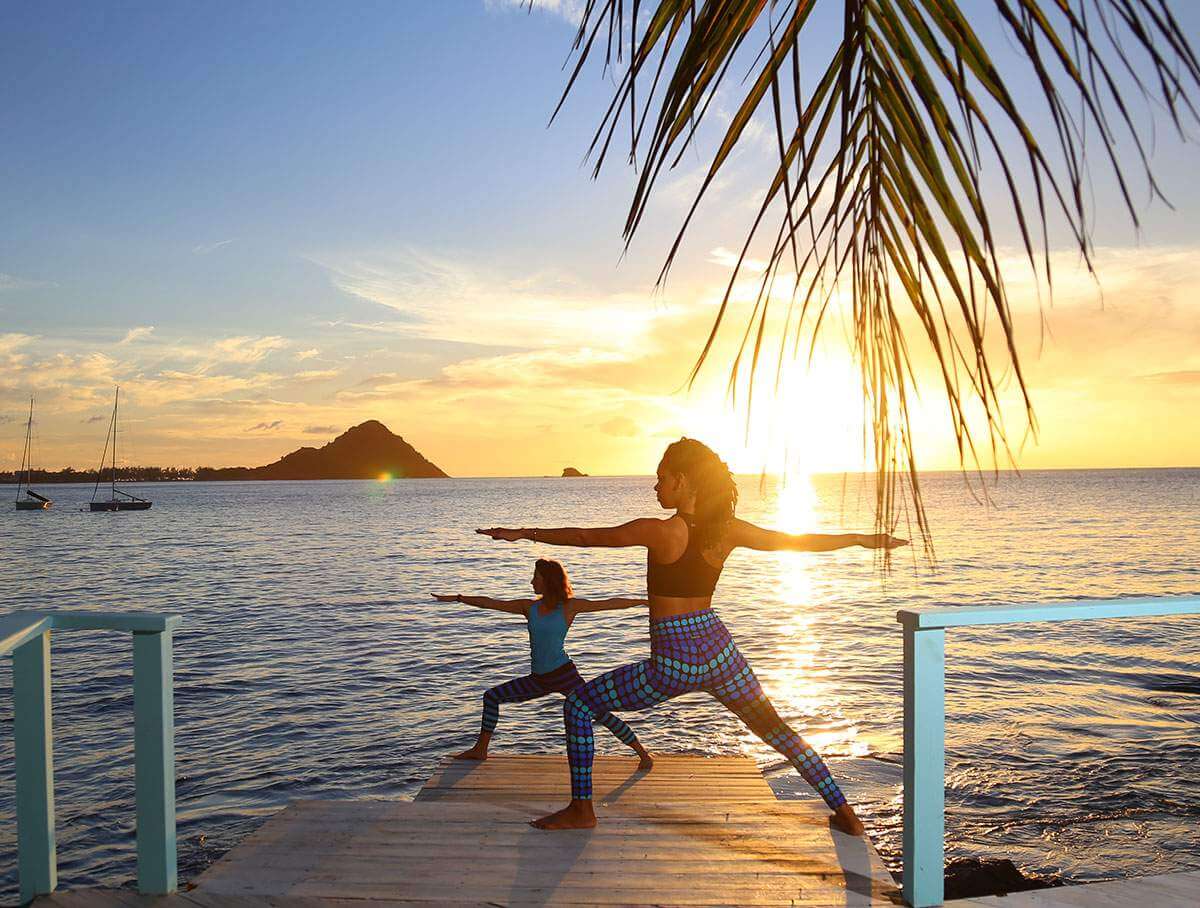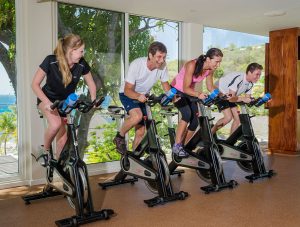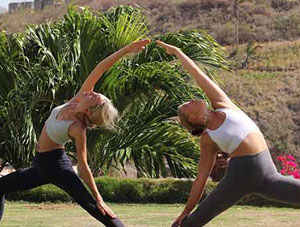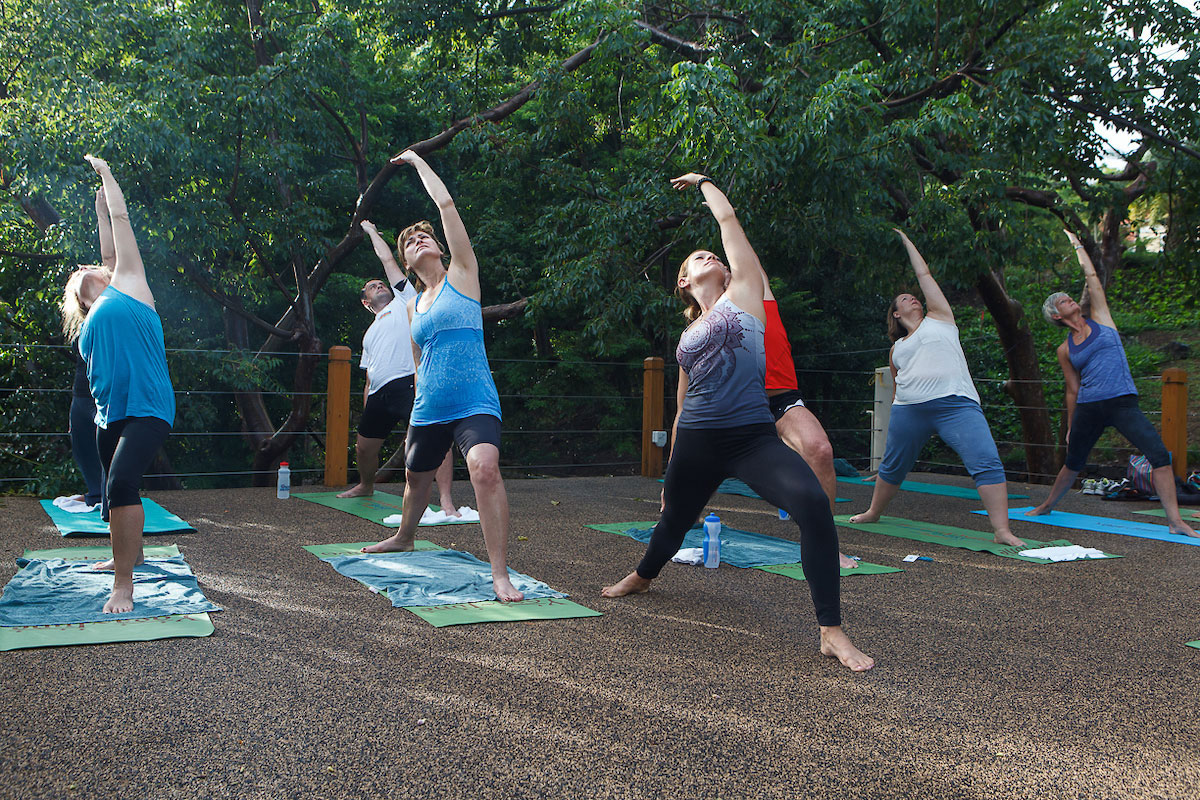Yoga is not a cult
It used to be that most Americans viewed Yoga as a weird cult, practiced only by the lost souls on the fringe, who were wasting their time reaching for an abstract view of life. An aspiring student of yoga was not someone you would want living in your own neighborhood, let alone in the house next door.
Today, Yoga is the latest and greatest pastime for movie stars, rock bands, computer geeks, athletics, and us common average every day folks. Now if you practice yoga, you are automatically respected and valued for your philosophical viewpoint on life. You are a celebrated hero, definitely the one who has it all together.
The recent overwhelming popularity of Yoga has its positive and negative aspects.
On the one hand, we no longer have to search the world over for a good yoga teacher. No more walking great distances over blazing deserts, climbing frozen mountains, sleeping on beds of nails, or walking barefoot on hot coals just to earn the right to practice. In almost any town across America, you can now find great yoga teachers from an array of diverse styles. What’s more, you don’t have to audition to be taken seriously: and all you have to do is show up and your are accepted in the group.
On the other hand, Yoga has become more complicated now that it is accessible to everyone. You have to be knowledgeable enough to decide which style, or teacher is most beneficial, educational, fun, and down to Earth. So where do you begin on your search to find the wisdom and answers to all your questions for every day life and beyond, yet in a nice cheery, level headed manner? Should you base your practice on the softer styles, which embrace flexibility and relaxation, or the harder styles, which promise a great workout and lots of muscle resistance and sweat? Should you invest in spirituality or just use yoga for the physical attributes?
All styles of Yoga have their own unique benefits, appealing to your own individual personality, or goals.
Among them, there are many similarities. For instance, all yoga posture practice is categorized as Hatha Yoga, which translates as meaning masculine and feminine, strength and softness, or ying and yang. I always tell my students that when choosing a practice, choose one that defines the true meaning of Yoga: union. Within this definition it is to your advantage to practice both hard and soft forms of Yoga. This creates a greater balance of both physical and mental energy, allowing the student to progress a more rapid pace, without injuries.
Surprisingly enough the way you move from one posture to the next is as important, if not more important, than choosing between hard or soft yoga practice. The movement between postures is called a vinyasa, or connecting link. What you do with your body affects your mind and whole energy level. When practicing either hard or soft form styles of yoga, try to move with fluidity and grace as you enter and exit each yoga posture, still maintaining strength and power. This manor of practice will reward you with greater energy, deeper relaxation, and a more focused mind.
Let your yoga flow naturally like the energy of a river as it journeys to the sea, sometimes powerful and other times soft.
As for spirituality and religion – this can mean different things to different yoga students and is often two separate issues. For many students – Yoga itself is not a religion it is a philosophy, integrating body mind and spirit. On the other hand, some yoga students seek out specific religion beliefs, as many Hindus practice Yoga. The choice is ultimately yours – you may feel spirituality in itself is a natural bond with nature, or a faith in a greater power, or perhaps a union of universal energy within your own body and mind. This is a personal matter and the answers will come as you practice your yoga. Remember the masterful words of yoga: “the journey is everything.” Just by committing yourself to the practice, your answers will come to you.
In time you will discover that your yoga practice also affects your whole life in a positive way.
Your daily life will take on the essence of confidant energy flow, productive organization, flexibility of mind and body, clear communication, with a sense of inner peace. Yoga is an internal practice with eternal results touching every aspect of your whole life in a positive way. In yoga this is called harmony within! You become aware of how your thoughts, actions and words touch others and the world around your.
Muscle resistance is found in specific exercises, which strengthen and challenge the different isolated muscle groups. The classic form of muscle resistance is weight lifting, chin-ups, push-ups, sit-ups, or isometric exercises that push one muscle against another. The more challenging forms of Yoga offer a fair bit of muscle resistance, such as Ashtanga, Power Yoga and Vinyasa Yoga, although sometimes fall short of the whole body demand. Even the softer forms of yoga such as Kripalu, or Integral create some degree of muscle resistance. Once again, if you are concerned about whole body health – it can only benefit your yoga and your overall health – to cross train getting at least 20 – 30 minutes of quality muscle resistance four times a week.
Stretching is a plus for yoga students; yet don’t get stuck in the same routine day after day. Strive to rotate with different practice and postures over a period of time to insure covering every area of your body. If you ignore the whole body concept, or practice the same stretches daily – you may end up flirting with the dark side and dancing with injuries.
When you get hungry and find yourself staring down the barrel of a sugar donut, armed with a full mug of soda pop, preparing to declare war on your whole anatomy…be sure to remember your body is your temple and you should treat it with respect. Stay away from junk food, fast food, and artificial and unnatural food. You can enhance your overall health by simply eating food in its raw, natural state. Try to eat lots of green, chlorophyll-rich foods such as raw leafy greens, which protect your body against pollution and enhance your immune system. Drink plenty of liquids daily and try not to overeat.
Strive to use the energy you create in Yoga to help you to become a better person. If you throw a pebble in to a still pond, this energy creates ripples, which eventually touch every shore. In the same respect, your presence in life creates ripples in time, what you do in one way or another affects people in future generations.
Words to live by –
Think before you speak
Think before you eat
Think before you act
Doug Svenson, Yogi, is a world renowned practitioner and often hosts our Octoba Yoga Month




















